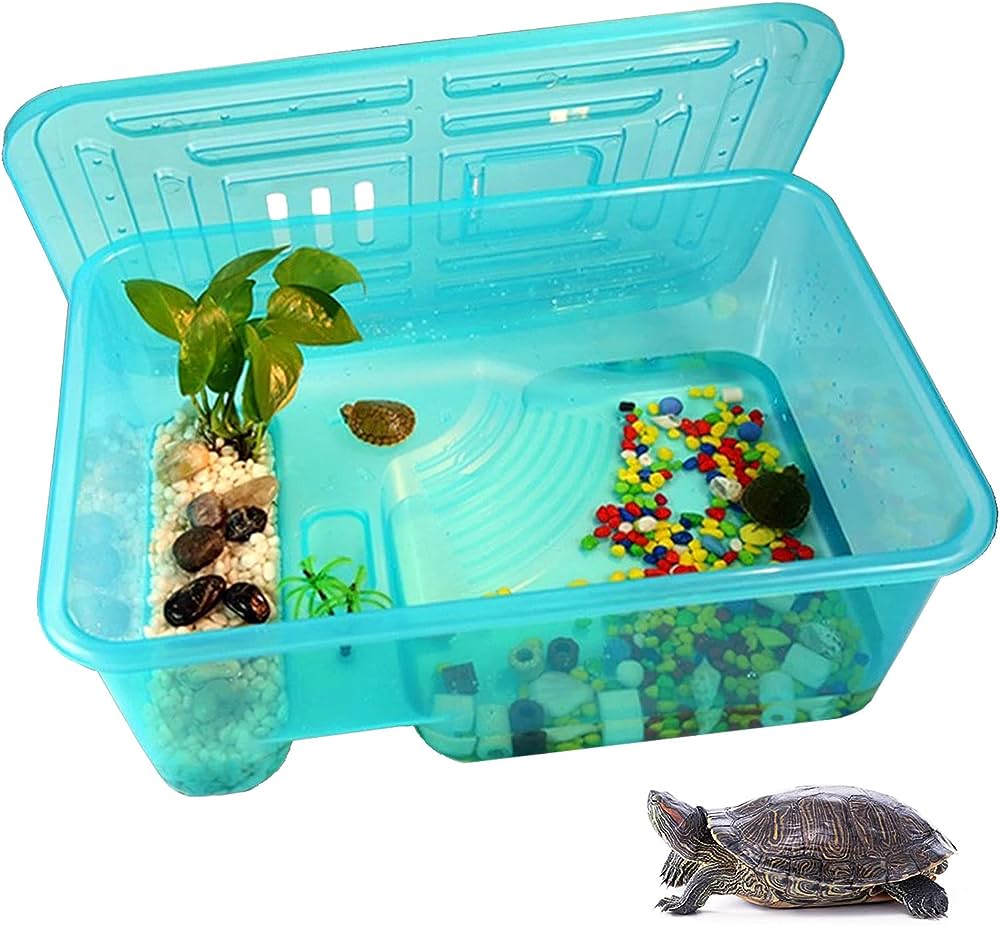So, you’ve got yourself a cute little baby turtle, huh? Well, let me tell you, they can be quite the escape artists! It’s important to create a safe and secure habitat for your little reptilian friend to prevent any Houdini-like escapes. In this article, we’ll dive into all the tips and tricks you need to know to ensure your baby turtle stays happy and safe in its enclosure. From choosing the right materials to setting up the perfect environment, we’ve got you covered. Trust me, by the end of this article, you’ll be a pro at creating a fortress for your tiny turtle.
Now, I know you’re probably wondering, “Why is this even necessary? Can’t I just let my turtle roam around freely?” Well, as adorable as that might sound, it’s not the safest option. Baby turtles are small and can easily get into places they shouldn’t, or worse, escape into the great unknown. They also have specific environmental needs that need to be met, such as proper temperature and lighting. By creating a safe and secure habitat, you’ll not only prevent escapes but also ensure your baby turtle has a comfortable and healthy living space. Stick around, and we’ll guide you through the dos and don’ts of setting up the ultimate turtle habitat.
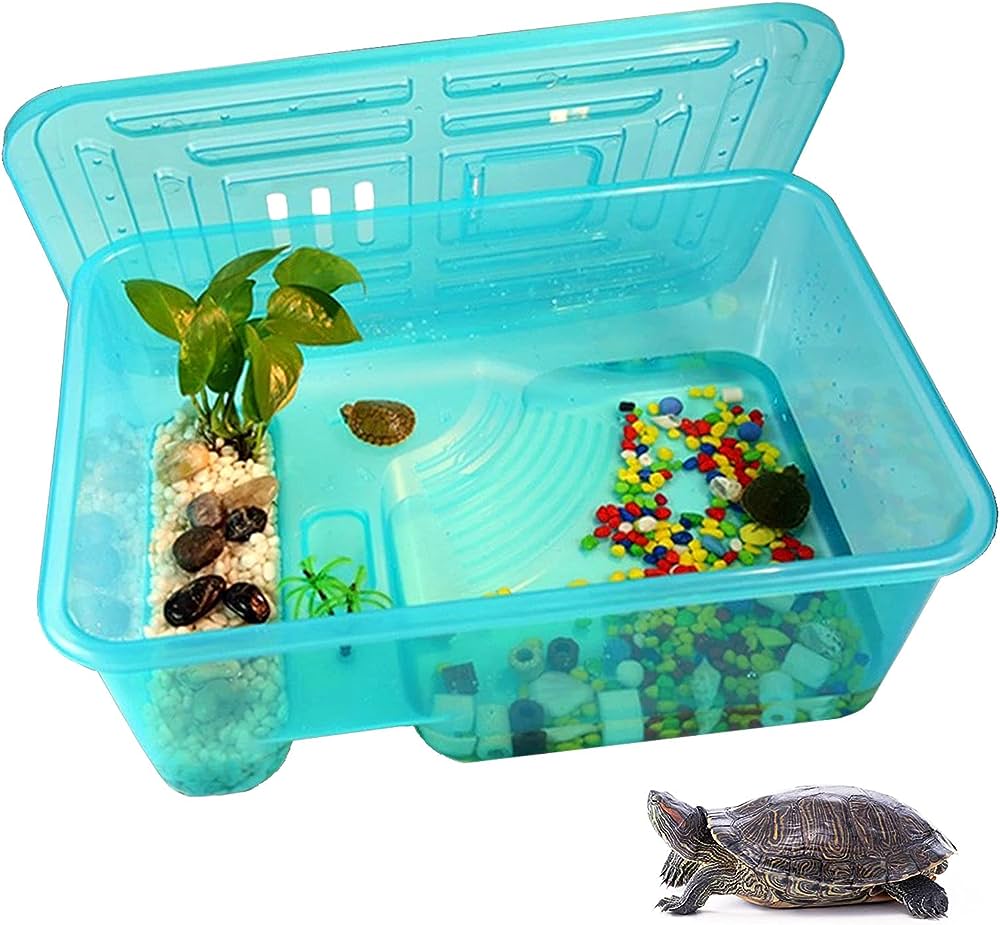
Why is creating a safe and secure habitat important for baby turtles?
Baby turtles are incredibly vulnerable and depend on favorable environmental conditions for their survival and well-being. Creating a safe and secure habitat for them is of utmost importance to protect them from various threats, provide optimal conditions for their growth and development, and ensure their overall health and happiness.
The vulnerability of baby turtles
Baby turtles are highly susceptible to a range of dangers due to their small size and limited capabilities. Unlike their adult counterparts, they lack the strength, agility, and experience to defend themselves against predators or navigate challenging environments. Without a safe and secure habitat, they face a significantly higher risk of injury, illness, and even death.
The threat of predators
One of the most significant dangers to baby turtles is predation. Many predators, such as birds, raccoons, and larger fish, view baby turtles as a source of food. Without proper protection, these vulnerable creatures are left defenseless against their natural predators. Creating a secure habitat acts as a barrier against potential predators, giving baby turtles a better chance of survival.
The need for optimal conditions
Baby turtles require specific environmental conditions to thrive. Factors such as temperature, lighting, humidity, substrate, and water quality play crucial roles in their overall well-being. Without these optimal conditions, baby turtles may experience stunted growth, weakened immune systems, and various health issues. By creating a safe and secure habitat, you can control and maintain these conditions, ensuring your baby turtles grow and develop properly.
Understanding the natural habitat of baby turtles
To create a safe and secure habitat for baby turtles, it is essential to understand their natural environments. Different turtle species originate from various habitats worldwide, ranging from tropical rainforests to deserts and freshwater ponds to coastal areas. When recreating their natural habitat, it is crucial to consider these native environments to provide baby turtles with a comfortable and familiar space.
The native environments of different turtle species
Each turtle species has specific humidity, temperature, and lighting requirements that mimic their natural habitats. Researching the native environments of different turtle species will help you tailor the habitat to their specific needs. For example, aquatic turtles require an enclosure with ample water, while land-dwelling turtles need ample land space for exploration.
Factors to consider for recreation
While it may be impossible to completely replicate the natural habitat, certain factors should be considered when recreating a suitable environment for baby turtles. These factors include providing suitable temperature gradients, proper lighting, and appropriate substrate for burrowing or basking, depending on the species. By mimicking these elements, you can ensure the comfort and well-being of your baby turtles.
Simulating temperature, lighting, and humidity levels
Temperature, lighting, and humidity levels are crucial aspects of a baby turtle’s habitat. Achieving the right balance is essential to their overall health and development. Temperature can be controlled using various heat sources, such as heat lamps or heating pads, while UVB lighting is necessary for proper calcium absorption and shell development. Additionally, maintaining the right level of humidity is essential for a baby turtle’s respiratory health. Monitoring and adjusting these factors regularly will create an environment that closely resembles their natural habitat.
Selecting the right enclosure for baby turtles
The choice of enclosure is a vital aspect of creating a safe and secure habitat for baby turtles. It determines the available space, ventilation, and overall protection from potential dangers.
Choosing between indoor and outdoor setups
When deciding between an indoor or outdoor enclosure, several factors come into play. Indoor setups provide greater control over temperature, lighting, and overall environmental conditions. They are particularly beneficial for species that require specific temperature ranges or are sensitive to outdoor elements. Outdoor setups, on the other hand, offer more space and natural sunlight, which can benefit certain species. It’s essential to consider the specific needs of your baby turtles and choose the setup that best suits them.
The size and materials of the enclosure
The size of the enclosure is crucial to ensure the well-being of baby turtles. It should be spacious enough to accommodate their growth and provide ample room for swimming, basking, and exploration. The enclosure should also be made of materials that are safe, durable, and non-toxic for the turtles. Avoid using materials that can harm or injure them, such as sharp edges or toxic substances.
Providing adequate ventilation
Proper ventilation is necessary to maintain air quality and prevent the buildup of harmful gases or excessive humidity. Without adequate ventilation, the enclosure can become a breeding ground for bacteria and fungi, leading to various health issues for baby turtles. Ensuring that the enclosure has sufficient airflow will contribute to a safe and comfortable habitat.
Building a secure enclosure for baby turtles
Creating a secure enclosure is essential to prevent escapes and protect baby turtles from potential predators or harm. A well-built enclosure also provides peace of mind for the caregiver, knowing that the turtles are safe even when unattended.
Fortifying the walls to prevent escapes
The enclosure walls should be built to prevent baby turtles from escaping. Depending on the species, turtles can be surprisingly skilled climbers or diggers. To prevent escape, the walls should be high enough or have barriers that discourage climbing. Additionally, burying the walls slightly into the ground can prevent turtles from digging their way out.
Installing a secure lid or cover
A secure lid or cover is crucial to prevent predators, such as birds or other animals, from accessing the enclosure. Choose a lid or cover that is strong and durable, ensuring it cannot be easily lifted or broken. Make sure it fits the enclosure properly and provides ample ventilation while preventing any potential escapes.
Using mesh or barriers to deter predators
In addition to a secure lid or cover, using mesh or barriers around the enclosure can further deter potential predators. The mesh should have small enough openings to prevent predators from reaching inside but large enough for proper ventilation. Surrounding the enclosure with barriers, such as fences or walls, can also provide an extra layer of protection.
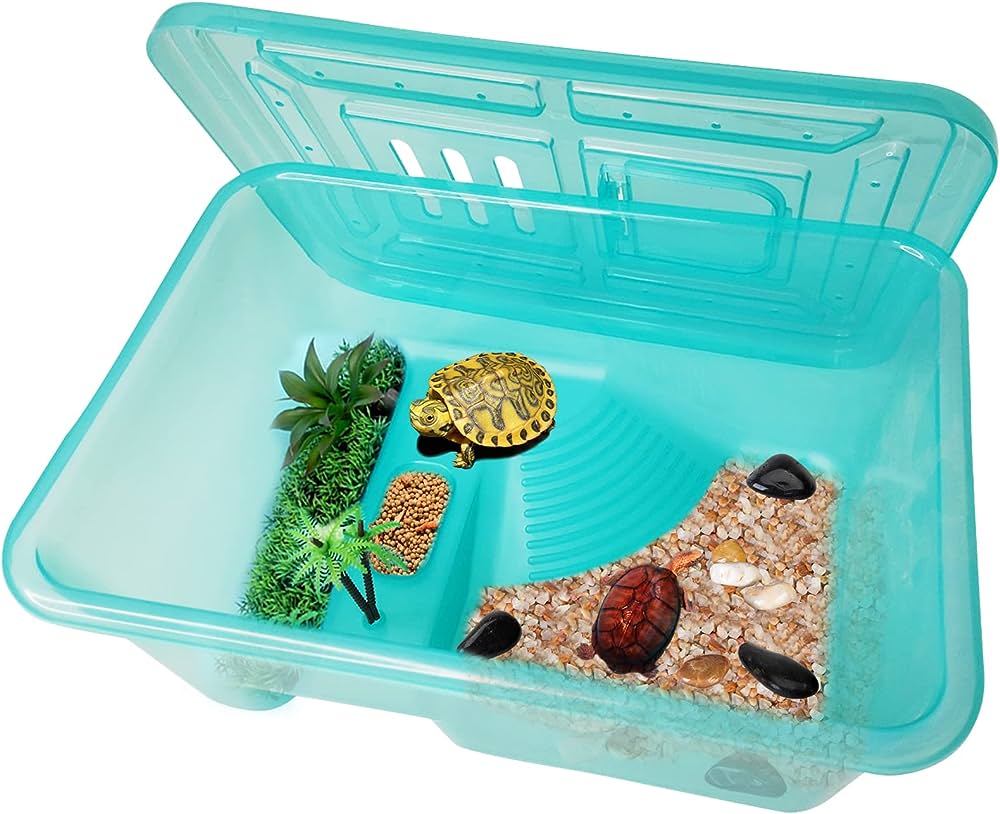
Creating the ideal substrate for baby turtles
The substrate, or bedding, of the enclosure is an essential component of a safe and secure habitat for baby turtles. It serves several purposes, including providing a soft and safe surface for the turtles, aiding in burrowing or nesting behaviors, and facilitating natural behaviors.
Understanding the turtle’s natural substrate
Different turtle species have different preferences when it comes to substrate. For example, aquatic turtles may require a substrate that mimics the riverbed or pond floor, such as smooth rocks or fine sand. Land-dwelling turtles, on the other hand, may prefer a substrate that allows for burrowing or nesting, such as a mixture of sand and soil. Researching the natural substrate of your specific turtle species will help you choose the most suitable option.
The importance of a soft and safe substrate
A soft and safe substrate is crucial to prevent injuries and promote the natural behaviors of baby turtles. It should be free from sharp edges or rough surfaces that can harm their delicate skin or shells. A substrate that allows for burrowing or nesting also satisfies their natural instincts, offering them a sense of security and comfort.
Choosing the right substrate for different turtle species
The choice of substrate depends largely on the turtle species and their specific requirements. Some common options include sand, soil, moss, or a combination of these materials. It is essential to choose a substrate that is easily cleaned and maintained and does not pose a health hazard to the turtles. Regular monitoring and cleaning of the substrate will ensure a clean and safe habitat for the baby turtles.
Designing an efficient heating system
Maintaining the optimal temperature in the enclosure is vital for the health and well-being of baby turtles. They are ectothermic creatures, meaning they rely on external heat sources to regulate their body temperature.
Maintaining the optimal temperature in the enclosure
Different turtle species have different temperature requirements. It is important to provide a temperature gradient within the enclosure, allowing the turtles to choose their preferred thermal zone. This can be achieved by placing heat sources in specific areas, such as basking spots or sunning platforms, while also providing cooler areas for the turtles to retreat to.
Selecting the right heat sources
Various heat sources can be used to maintain the temperature in the enclosure. Heat lamps, heating pads, or submersible heaters are common options, depending on the setup and the needs of the turtles. It is essential to choose heat sources that are safe, reliable, and provide the required amount of heat without overheating the enclosure.
Using thermostats and temperature controllers
To ensure consistent and appropriate temperatures, it is advisable to use thermostats or temperature controllers in conjunction with heat sources. These devices help regulate the temperature by automatically switching the heat source on or off as needed. Regular monitoring and adjustment of the temperature will help create a stable and comfortable habitat for baby turtles.

Ensuring proper lighting for baby turtles
Proper lighting is essential for the health and well-being of baby turtles. It not only provides the necessary illumination for their activities but also plays a crucial role in their physiological processes, such as calcium metabolism and vitamin D synthesis.
The role of UVB lighting in turtle health
UVB lighting is particularly important for baby turtles as it enables them to produce vitamin D3, which is crucial for calcium absorption and healthy shell development. Lack of UVB lighting can result in various health issues, such as metabolic bone disease, shell deformities, and stunted growth. Providing UVB lighting is vital to create a safe and secure habitat for baby turtles.
Providing a proper light cycle
Baby turtles, like many reptiles, require a proper light cycle to maintain their natural rhythms and behaviors. This includes a period of light and darkness that mimics their natural environment. A timer can be used to ensure a consistent light cycle, providing a sense of security and normalcy for the baby turtles.
Choosing the right light fixtures and bulbs
When it comes to selecting light fixtures and bulbs, it is essential to choose those specifically designed for reptiles and turtles. These fixtures often include built-in reflectors and UVB bulbs, ensuring proper lighting intensity and spectrum. Regular replacement of bulbs is necessary as their effectiveness decreases over time.
Providing a varied diet for healthy growth
Proper nutrition is crucial for the healthy growth and development of baby turtles. Offering a varied diet that meets their nutritional requirements is essential to ensure their overall health and well-being.
Understanding the nutritional needs of baby turtles
Baby turtles have specific dietary needs that differ from adult turtles. They require a balanced diet that includes a variety of proteins, vegetables, and calcium-rich foods. Researching the specific dietary requirements of your turtle species will help you provide the right nutrition for their growth and development.
Offering a combination of live and commercial food
A varied diet for baby turtles often includes a combination of live and commercial food. Live food, such as worms, insects, or small fish, provides essential proteins and nutrients that promote healthy growth. Commercial pelleted or powdered food specifically formulated for baby turtles can also be used to supplement their diet and ensure all their nutritional needs are met.
Supplementing with vitamins and minerals
Supplementing the baby turtles’ diet with vitamins and minerals is often necessary to prevent deficiencies and optimize their overall health. Calcium supplements are particularly important for proper shell development and avoiding metabolic bone disease. It is crucial to follow the recommended dosage, as excessive supplementation can be harmful.
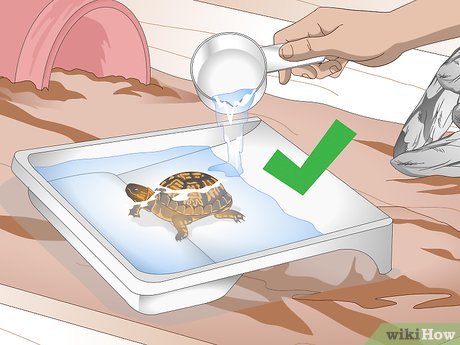
Maintaining clean and filtered water
Clean and filtered water is essential for the overall health and well-being of baby turtles. Inadequate water quality can lead to bacterial or fungal infections, shell rot, and other health issues.
The importance of water quality for baby turtles
Water quality significantly impacts the health of baby turtles, as they spend a significant portion of their lives submerged. It is important to maintain clean and filtered water that is free from chlorine, heavy metals, excessive ammonia, or other harmful substances. Regular water testing and maintenance are crucial to ensure a safe aquatic habitat.
Installing an efficient filtration system
A reliable filtration system is essential to keep the water in the turtle enclosure clean and free from impurities. Filtration systems help remove debris, waste, and harmful bacteria, ensuring a healthy environment for the baby turtles. It is important to choose a filtration system that is adequately sized and appropriate for the volume of water in the enclosure.
Regular water testing and maintenance
Regular water testing is essential to monitor and maintain water quality. Testing for parameters such as pH, ammonia, nitrite, and nitrate levels can help identify any imbalances or issues that require attention. Regular water changes, typically ranging from 25%-50% of the total water volume, are necessary to prevent the buildup of harmful substances and maintain the overall cleanliness of the habitat.
Creating proper hiding spots and enrichment
Providing hiding spots and enrichment in the enclosure contributes to the overall well-being and mental stimulation of baby turtles. These elements help reduce stress, mimic their natural environment, and provide opportunities for exploration and engagement.
Offering hiding spots for stress reduction
Hiding spots, such as caves, tunnels, or vegetation, play a crucial role in reducing stress for baby turtles. They provide a sense of security and privacy, allowing the turtles to retreat and feel safe when needed. Hiding spots also serve as essential places for nesting or hibernation behaviors, depending on the species.
Providing natural elements for mental stimulation
Enrichment in the form of natural elements, such as rocks, logs, or aquatic plants, helps stimulate the baby turtles mentally and physically. These elements provide opportunities for climbing, basking, exploring, and engaging in natural behaviors. Incorporating various textures and shapes can create a diverse and engaging habitat for the turtles.
Incorporating aquatic plants and decorations
Aquatic plants not only enhance the aesthetic appeal of the enclosure but also serve as hiding spots and provide oxygenation and filtration benefits. Selecting non-toxic aquatic plants that can withstand the turtle’s behavior and water conditions will contribute to the overall health of the habitat. Additionally, decorative elements, such as driftwood or artificial caves, can further enhance the turtles’ environment.
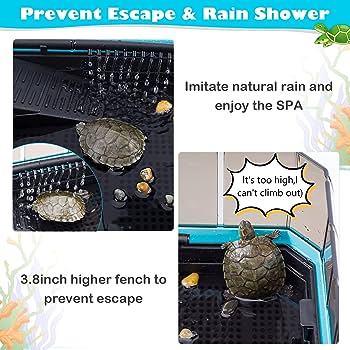
Preventing potential hazards in the enclosure
Creating a safe and secure habitat for baby turtles also involves identifying and eliminating potential hazards that can threaten their well-being. Several precautions should be taken to ensure a hazard-free environment.
Identifying and removing toxic plants
Some plants can be toxic or harmful to baby turtles if ingested. It is crucial to research and identify any toxic plants that may be present in the enclosure or could be brought in from the outside. Removing these plants or avoiding them altogether is essential to prevent any potential harm.
Avoiding sharp edges and dangerous objects
Sharp edges, rough surfaces, or dangerous objects within the enclosure pose a threat to baby turtles. They can cause injuries, wounds, or shell abrasions. Regular inspection of the enclosure and removing any dangerous objects or making them inaccessible to the turtles is necessary to maintain a safe environment.
Eliminating any electrical hazards
Electrical hazards, such as exposed wires or improperly installed heating elements, can be dangerous for baby turtles. They may accidentally come into contact with these hazards and suffer electrical burns or shocks. Ensuring that all electrical components are properly installed, insulated, and maintained will eliminate this potential risk.
Monitoring and addressing any health issues
Regular monitoring of baby turtles’ health is crucial to identify and address any potential issues promptly. Early detection and intervention can significantly improve their chances of recovery and prevent further complications.
Recognizing signs of illness or malnutrition
Closely observing the behavior, appetite, and physical appearance of baby turtles is important to identify any signs of illness or malnutrition. Common signs may include lethargy, loss of appetite, shell abnormalities, abnormal feces, or excessive shedding. Consulting a reptile veterinarian promptly when these signs are observed can help diagnose and treat any underlying health issues.
Seeking appropriate veterinary care
When baby turtles require medical attention, it is important to seek appropriate veterinary care from professionals experienced in reptile and turtle medicine. Regular check-ups and preventive care, such as fecal examinations and dietary assessments, can also contribute to the overall health and well-being of the turtles.
Implementing preventive measures
Preventing health issues in baby turtles involves implementing preventive measures, such as providing appropriate nutrition, maintaining optimal environmental conditions, and practicing good hygiene. Regular health assessments and proactive care can significantly reduce the risk of illnesses and ensure a safe and secure habitat.
Regular maintenance and upkeep of the habitat
Creating a safe and secure habitat for baby turtles requires regular maintenance and upkeep. Consistent care and monitoring will help ensure the longevity of the enclosure and the health of the baby turtles.
Creating a cleaning and maintenance schedule
Establishing a cleaning and maintenance schedule is crucial to keep the habitat clean and safe. Regular tasks may include water changes, substrate cleaning or replacement, filter maintenance, and removing any debris or uneaten food from the enclosure. Following a schedule ensures that necessary tasks are not overlooked or neglected.
Performing regular water changes
Regular water changes are essential to maintain water quality and prevent the buildup of harmful substances. Depending on the volume of water and filtration system, water changes ranging from 25%-50% should be performed regularly. This helps remove waste and accumulated toxins, providing a clean and healthy aquatic environment for the turtles.
Inspecting and repairing enclosure components
Periodic inspections of the enclosure’s components, such as walls, lid, filters, and heat sources, are necessary to identify any damage or wear. Any issues should be addressed promptly to prevent potential escapes, injury, or compromise to the overall security of the habitat. Regular maintenance and repairs ensure the longevity and effectiveness of the enclosure.
Conclusion
Creating a safe and secure habitat for baby turtles is crucial for their survival, growth, and well-being. By understanding their vulnerability, their native environments, and their specific needs, you can provide an optimal and secure habitat. From selecting the right enclosure, maintaining the appropriate temperature and lighting, providing a varied diet, and ensuring water quality, each aspect contributes to the health and happiness of your baby turtles. By prioritizing their safety and considering the factors discussed in this article, you are not only providing a comfortable home for your baby turtles but also contributing to the conservation and well-being of turtle populations worldwide.
